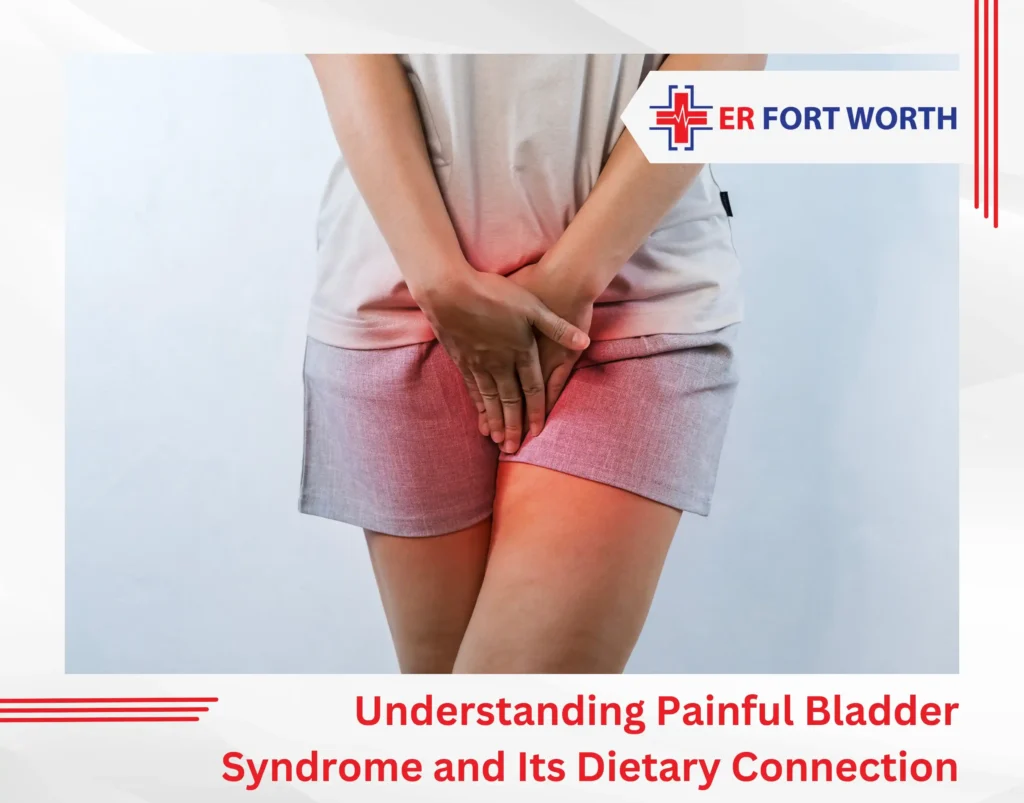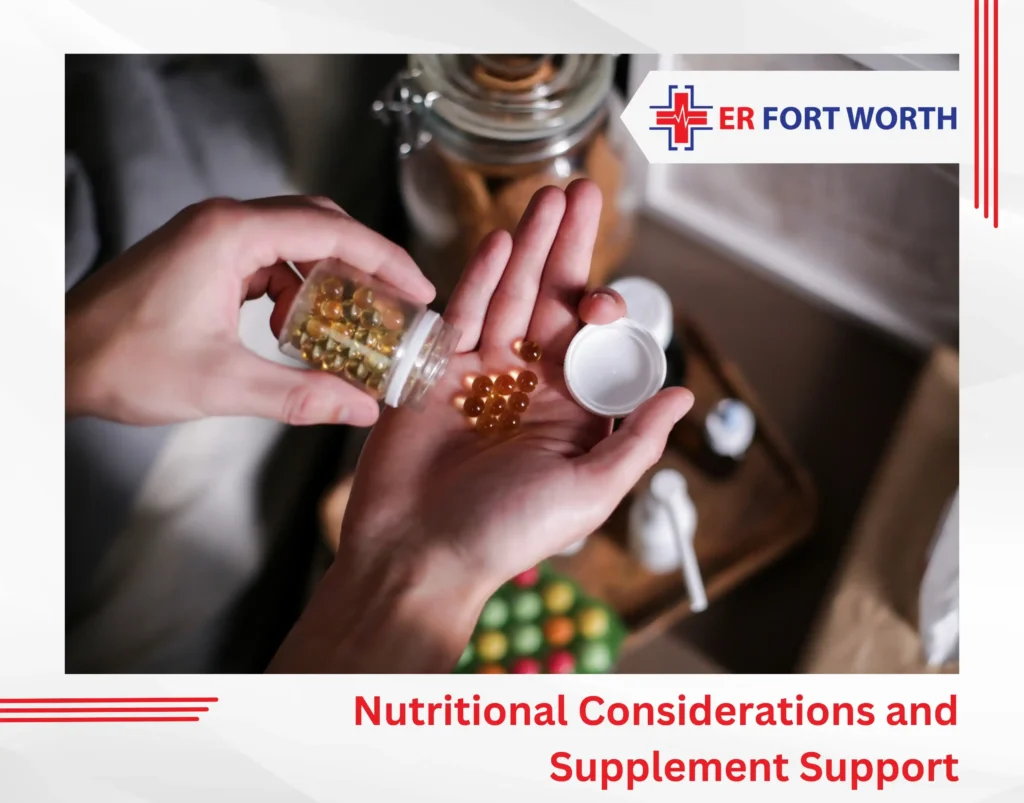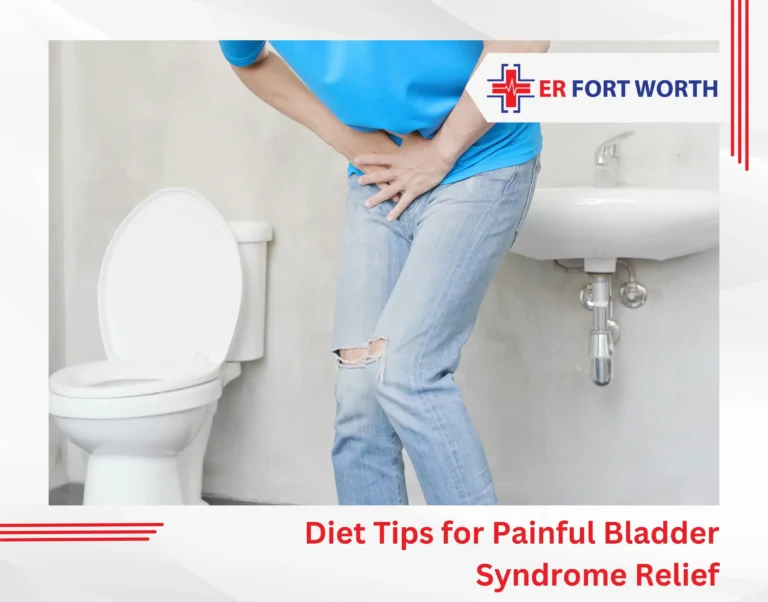Living with painful bladder syndrome means constantly wondering if your next meal will trigger a flare. That morning coffee, afternoon orange, or evening spiced dinner could send your bladder into emergency within hours.
Painful bladder syndrome dietary modification offers real hope for symptom relief. By identifying your personal trigger foods and building an IC-friendly meal plan, many people experience significant improvement in pain and urgency.
This guide provides practical strategies for managing symptoms through targeted dietary changes. It also helps you create a sustainable eating plan that supports both your bladder health and nutritional needs.
Understanding Painful Bladder Syndrome and Its Dietary Connection

What Happens in Your Bladder
Painful bladder syndrome involves chronic inflammation of the bladder wall, causing pain, pressure, and frequent urination. While the exact cause remains unclear, the condition makes your bladder lining hypersensitive to certain substances in foods and drinks.
How Food Triggers Symptoms
When you eat trigger foods, irritating compounds travel through your kidneys and concentrate in your urine. These substances then contact your already inflamed bladder wall, potentially causing:
- Increased pain and pressure
- More frequent urination
- Burning sensations
- Urgent bathroom trips
The Power of Dietary Changes
Research shows that approximately 90% of people with interstitial cystitis experience symptom improvement through elimination diets. However, trigger foods vary significantly between individuals, making personalized dietary approaches essential for optimal results.
The Science Behind IC-Friendly Foods
The foundation of an effective interstitial cystitis diet lies in understanding which foods are naturally less irritating to the bladder.
IC-friendly foods typically share several characteristics:
- Low in acid
- Free from artificial additives or preservatives
- Contain anti-inflammatory properties that help reduce bladder irritation
Alkaline foods play a particularly important role in bladder health. These foods help neutralize acid in the urine, creating a less irritating environment for the sensitive bladder lining.
Additionally, foods rich in natural anti-inflammatory compounds, such as quercetin and omega-3 fatty acids, may help reduce the chronic inflammation associated with PBS.
IC-Friendly Foods: What to Eat for Interstitial Cystitis Relief?
Creating a sustainable bladder pain diet starts with identifying safe, nutritious foods that form the foundation of your meal planning. These IC-friendly foods are generally well-tolerated and provide essential nutrients while minimizing bladder irritation.
Proteins and Dairy
Lean proteins serve as excellent building blocks for an interstitial cystitis diet. Fresh fish, particularly varieties rich in omega-3 fatty acids like salmon, mackerel, and sardines, offer anti-inflammatory benefits.
Poultry, including chicken and turkey, provides high-quality protein without common trigger compounds. Eggs are typically well-tolerated and versatile for meal preparation.
Among dairy products, mild cheeses like mozzarella and ricotta are often safe choices, while plain yogurt without added fruits or artificial sweeteners can provide beneficial probiotics.
Vegetables
Most vegetables are naturally alkaline and provide essential vitamins, minerals, and fiber. Leafy greens such as lettuce, spinach, and kale are excellent choices.
Root vegetables like carrots, sweet potatoes, and squash offer natural sweetness and important nutrients.
Cruciferous vegetables including broccoli, cauliflower, and Brussels sprouts provide antioxidants that support overall health. Asparagus, green beans, and peas are also generally well-tolerated options.
Fruits
While many fruits are acidic and potentially problematic, several options are considered safer for those following a bladder pain diet.
Pears are often the best-tolerated fruit, offering natural sweetness and fiber. Blueberries provide antioxidants and are less acidic than many other berries.
Melons, including cantaloupe and honeydew, are generally mild and hydrating. Bananas offer potassium and natural energy while being relatively alkaline.
Grains and Starches
Complex carbohydrates provide sustained energy and are typically non-irritating. Rice, particularly brown rice, is a staple for many people with PBS.
Potatoes, both white and sweet varieties, are versatile and well-tolerated. Oats offer fiber and can be prepared in numerous ways. Quinoa provides complete protein along with complex carbohydrates.
Water
Proper hydration is vital in managing PBS, but balance is key. While adequate fluid intake dilutes irritating substances in urine, excessive drinking can increase urgency and frequency. Aim for 6–8 glasses of water daily, spaced evenly. Some people find that alkaline water or small amounts of baking soda help neutralize acidity.
Limit fluids in the evening to reduce nighttime trips. Tracking your intake in a hydration and symptom diary can help you discover patterns that support bladder health.
Foods to Avoid: Common Triggers
Understanding potential trigger foods is crucial for successful painful bladder syndrome diet modification. While individual sensitivities vary, certain categories of foods are more likely to cause bladder irritation and should be approached carefully or avoided entirely during the initial phases of dietary management.
Acidic Foods and Beverages:
High-acid foods are among the most common triggers for PBS symptoms. Citrus fruits, including oranges, lemons, limes, and grapefruits, contain citric acid that can significantly irritate the bladder.
Tomatoes and tomato-based products are particularly problematic due to their high acid content and widespread use in cooking. Vinegar-based foods, including salad dressings and pickled items, should be avoided or consumed in very small quantities.
Caffeinated Beverages:
Caffeine acts as a diuretic and bladder stimulant, potentially worsening urgency and frequency. Coffee, both regular and decaffeinated, contains compounds beyond caffeine that can irritate the bladder.
Tea, particularly black and green varieties, may also cause problems. Energy drinks and caffeinated sodas combine caffeine with other potentially irritating ingredients.
Alcoholic Beverages:
Alcohol can irritate the bladder lining and acts as a diuretic, potentially worsening PBS symptoms. Wine, particularly red wine, contains histamines and sulfites that may trigger reactions. Beer and spirits can also be problematic, though individual tolerance varies.
Spicy and Highly Seasoned Foods:
Spices and hot foods can irritate the bladder, especially those containing capsaicin from chili peppers. Curry dishes, hot sauces, and heavily spiced ethnic cuisines may trigger symptoms. Even black pepper can be problematic for some individuals.
Artificial Sweeteners and Preservatives:
Many artificial additives can trigger bladder symptoms. Aspartame, saccharin, and other artificial sweeteners are commonly reported triggers. Preservatives, food colorings, and flavor enhancers found in processed foods may also cause problems.
The Elimination Diet Approach

Implementing an elimination diet is the gold standard for identifying personal food triggers in painful bladder syndrome dietary modification. This structured method helps uncover which foods contribute to flares in interstitial cystitis (IC), allowing for a more personalized, long-term eating plan.
Phase One: Elimination (2–4 weeks)
During this initial phase, you’ll follow a strict IC-friendly foods diet, consuming only items that are rarely problematic. Commonly tolerated choices include plain proteins like chicken and fish, safe vegetables such as carrots and green beans, pears as the primary fruit, and simple grains like rice. This phase aims to calm your bladder and establish a baseline for symptom monitoring.
Phase Two: Reintroduction (6–8 weeks)
Gradually reintroduce potentially irritating foods, one at a time, over 3–4 days each. Watch for any return of symptoms. If no symptoms appear, the food may be safe for your bladder pain diet. If symptoms flare, exclude that food and move to the next.
Phase Three: Maintenance (Ongoing)
Create a customized eating plan that incorporates tolerated foods while avoiding known triggers. Stay flexible, as sensitivities may shift over time. Periodic retesting may reveal new tolerances or sensitivities.
Nutritional Considerations and Supplement Support

A restricted interstitial cystitis diet can lead to nutrient gaps. Work with a registered dietitian to ensure balanced intake.
Key Nutrients to Monitor
- Vitamin C: Avoid citrus but consider alternatives like broccoli or strawberries (if tolerated).
- Calcium: If dairy is problematic, turn to leafy greens or fortified non-dairy options.
Potentially Helpful Supplements
- Quercetin: A natural anti-inflammatory that may reduce bladder pain.
- Probiotics: Can promote urinary tract balance, but consult your doctor for appropriate strains.
Key Takeaway
Painful bladder syndrome dietary modification offers real hope and practical relief for managing this often frustrating condition. Although identifying trigger foods and adjusting your diet takes time and commitment, the potential for long term symptom reduction makes it a worthwhile journey.
Because everyone’s response is different, a personalized approach is key. Through methods like the elimination diet, you can discover which foods aggravate your symptoms and which IC friendly foods support better bladder health. This structured process helps you create a manageable and effective bladder pain diet tailored to your needs.
At the ER of Fort Worth, we are equipped to assist patients experiencing severe or sudden symptoms of painful bladder syndrome. Our emergency team provides expert care and dietary recommendations that enhance both bladder comfort and overall well being.
FAQs
1. Can a bladder pain diet still meet my nutritional needs?
Yes, with proper planning, a bladder pain diet can be both symptom-friendly and nutritionally balanced. A registered dietitian can help ensure you get enough vitamins, minerals, and protein.
2. Are acidic fruits always off-limits in an interstitial cystitis diet?
Many people with PBS avoid citrus and acidic fruits, but some may tolerate lower-acid options like blueberries or watermelon. These should be tested individually as part of painful bladder syndrome dietary modification.
3. Is it safe to follow a vegetarian bladder pain diet?
Yes, but it may require avoiding common vegetarian irritants like soy or spicy legumes. Focusing on IC-friendly foods like cooked lentils, quinoa, and mild vegetables helps balance nutrition and bladder health.
4. Can painful bladder syndrome dietary modification reduce the need for medication?
In many cases, yes. While not a replacement for medical care, consistent painful bladder syndrome dietary modification can reduce symptom severity and sometimes lower reliance on medications.
5. How to calm an irritated bladder?
Start by avoiding known bladder irritants like caffeine, alcohol, citrus, spicy foods, and carbonated drinks. Use a heating pad on your lower abdomen, stay hydrated with plain water, and rest.
6. What drink soothes interstitial cystitis?
Plain water is the safest option. Some people find that slightly alkaline water or herbal teas like chamomile or marshmallow root (if tolerated) can soothe symptoms.
7. How to get rid of internal cystitis fast?
There’s no quick fix, but flare-ups can improve with strict trigger avoidance, hydration, bladder rest, and, in some cases, over-the-counter pain relief like a heating pad or antihistamines. For long-term relief, a personalized diet and consultation with a urologist or pelvic health specialist are key.




